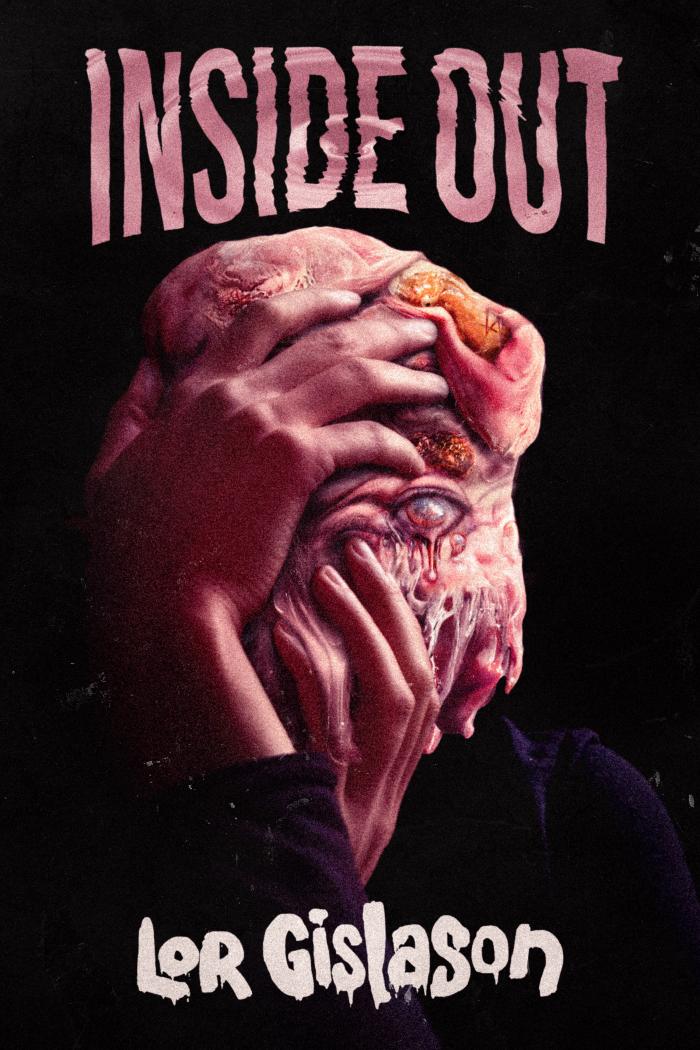Horror Does A Body Good In Lor Gislason's Novel, 'Inside Out'
FTC Statement: Reviewers are frequently provided by the publisher/production company with a copy of the material being reviewed.The opinions published are solely those of the respective reviewers and may not reflect the opinions of CriticalBlast.com or its management.
As an Amazon Associate, we earn from qualifying purchases. (This is a legal requirement, as apparently some sites advertise for Amazon for free. Yes, that's sarcasm.)

Let’s begin with some unusual facts about human anatomy:
- Some women can lactate through the skin of their armpit after giving birth.
- A condition called hyperdontia causes people to be born with an excessive amount of teeth.
- Body odor originates from bacteria eating sweat on the skin’s surface.
- Approximately one in one-thousand people are born with extra digits on their hands or feet.
- The average person produces enough saliva during their lifetime to fill two swimming pools.
There’s something inherently mystifying about the body. It is, in and of itself, contradictory: so strong, yet ultimately so fragile. The quirky enigmas of our physicality are enough to send even the stoutest among us into obsessive-compulsive hypochondria—the notion that millions of microscopic organisms are crawling in and out and over our every square inch right now can be an unsettling one. When our bodies rebel against us, too, through disease or inherited disorders, it can seem as if we’re sudden spectators to organic functions over which we have—and never have had—control.
In fictional terms, it’s that loss of biological autonomy that serves as the foundation of what’s popularly known as ‘body horror’. With a literary lineage extending as far back as Mary Shelley’s Frankenstein, Franz Kafka’s Metamorphosis and H.P. Lovecraft’s ‘The Colour Out of Space’, body horror was brought to its greatest public prominence through the work of Canadian auteur David Cronenberg, whose queasifying set pieces highlighted such films as Shivers, Rabid, Videodrome, The Fly and ExistenZ.
Modern practitioners of body horror need not look far for inspiration. In a post-pandemic world the whole of humanity’s collective unconscious has been influenced by the very real concept of viral/bacteriological contamination, and while some may argue it’s too soon to explore such a narrative track, Vancouver Island resident Lor Gislason boldly disregards those concerns with the release of the DarkLit Press novel, Inside Out.
Beginning quietly with an accident deep in a British Columbia mine, a previously undocumented pathogen is released into the environment that causes those exposed to physically degenerate into viscous, semi-sentient globs of flesh. These ‘Outers’, as they become known (short for ‘Inside-Outers’), cease to exist as individuals; their newly liquefied state allows them to join into a collective mass (referred to by both scientists and soldiers as ‘The Pile’), with other infected people. Prolonged exposure isn’t required to contract the illness, either—a simple scratch will transform you into a ravenous, jelly-like blob in a matter of mortifying minutes, and as the plague rapidly spreads, the ramifications upon society are ever-present and, perhaps fittingly, ever-evolving.
Gislason’s skill with Inside Out lies not in its setting; the viral Armageddon scenario, already tired before Covid-19, is wearier now than ever. No, the strength here is the manner in which the story unfolds. Overall, the book has the feel of a short story collection rather than a novel, and even plot, in the conventional sense, is non-existent: the situation advances instead through sixteen small character-portrait vignettes (dubbed ‘Segments’) that describe the plague’s effect on the lives of a variety of unrelated protagonists across North America. On the surface such an approach shouldn’t work, but leaving careful narrative gaps allows readers to fill in the empty spaces regarding the outbreak’s wider consequences by themselves. The segments, too, are masterfully rendered with realistic, three-dimensional characters in scenarios infused with tongue-in-cheek humor: the landlord who continues making the rounds to his various properties to check on his molten tenants; the anxious teenage virgin whose friend is devoured during a botched attempt to get laid; the tattooist determined to carry on with his daily routine until it’s far too late.
If the litmus test for any creative work is how much it impacts an audience, Inside Out ) matches—and even exceeds—the seat-squirming squeamishness induced by any of Croneneberg’s flicks. Every segment revels in hyper-detailed descriptions of bodily disintegration more potent than the grossest of hack ‘n slash gorefests. Every orifice that can squirt, ooze, dribble or drip is explored, stretched, strained and rearranged with a relish rarely seen on the written page. Gislason’s grisly passion for the subject shows in every paragraph, and it’s that unabashedly demented spirit that earns Inside Out a 4.5 (Out of 5) on my Fang Scale. Not recommended for anyone easily nauseated by reruns of House, M.D. For everyone else: get in the pile!


